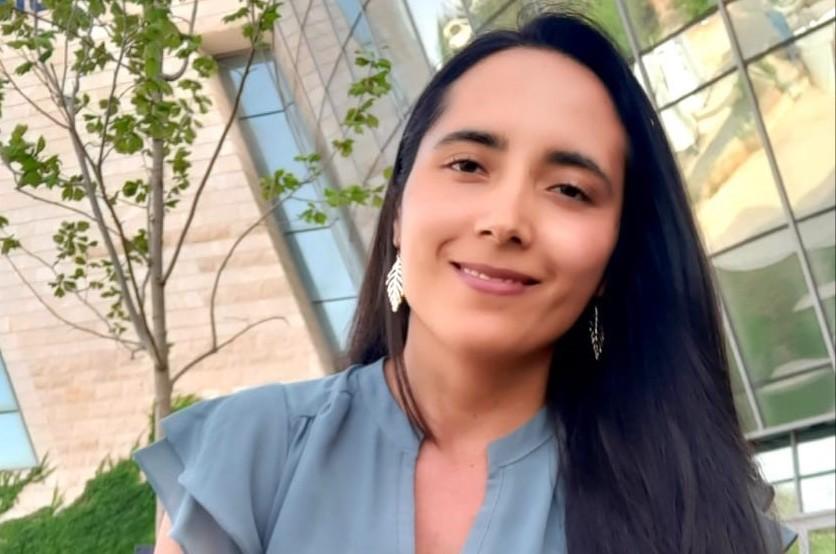
Submitted by L. Millard on Mon, 07/03/2022 - 10:49
Supporting the national drive to inspire more women to build careers in science, technology, engineering and maths (STEM), CSIC features a series of interviews to showcase the talent and diversity of women working in science and engineering. To mark International Women’s Day 2022, CSIC Research Associate, Digital Cities for Change (DC2), Viviana Bastidas Melo shares her story.
• How and why did you get into engineering?
I got interested in engineering in high school back home in Colombia when I started learning about informatics. We practiced in class with a simple game called 'logo' that worked using short computer instructions. I really loved it and started to get interested in programming. I was very curious about the future changes that computing (e.g., the internet) could bring to humanity. I thought that studying systems engineering could be a good opportunity to learn computer science and apply it in diverse domains.
• What is your current position at CSIC and what does it entail?
I am a Research Associate in Urban Systems and Infrastructure at the Cambridge Centre for Smart Infrastructure and Construction (CSIC). I work on the Digital Cities for Change (DC2) project which aims to develop a competency framework focusing on urban planning and responsible innovation. The framework will help city managers and built environment professionals to shape and redefine the roles and competencies to lead successful and sustained digital innovation. DC2 follows a socio-technical approach as a guide to outline the multidisciplinary abilities and knowledge required to close existing professional gaps in the context of digital cities. The resulting competency framework will enable the development and delivery of new interdisciplinary post-graduate courses.
• What motivates you about what you do?
I am passionate about the architecture design and development of new ‘artefacts’ that help to solve problems faced in practice. These artefacts can be frameworks, methodologies, metamodels, and models, which can be understood by people and computers. I particularly believe that these artefacts can help professionals in different domains to deliver better results for people, organisations, and the environment.
• Who has helped shape your career – people, colleagues, family?
My parents were the first to teach me the importance of education. They are the inspiration of my life. Their example of being disciplined and responsible with my education and my career is always with me. Of course, I have met many colleagues and friends who have supported me and who have been important at every stage of my career.
• What do you hope to gain from working with CSIC and where would do you like to see your career going?
First, I would like to contribute in the best way to the achievement of the DC2 project objectives. I think that the CSIC research will help me to gain a strong understanding of how to support decision-making processes by using digital technologies for infrastructure and urban planning. This fits and complements my previous research on Smart Cities architectures. CSIC provides a unique environment with case-based learning by interacting with professionals from innovative city projects and multiple disciplines. Additionally, I find the development of educational content can be really beneficial to practitioners. These are key elements that stimulate my interest in research and my future career.
• How have you overcome challenges in your working and academic life?
I think that we face challenges all the time in research, and that is what motivates me. Research is an exciting and dynamic process. Understanding real-world problems and finding new solutions that can benefit people is challenging. The best way to tackle those challenges has been to first understand the problems, their context, the people and systems affected, and then think about possible solutions.
• What do you think might encourage more women to work in science and engineering?
I think that exposure to science and engineering from early stages, for example, from school, is necessary. Children, in general, can learn about different areas of engineering through their classes in schools or in public workshops and science events. I think scientists play an important role in making this happen. Public engagement activities where we can explain to children about engineering and our research in ‘context’ can encourage them to learn more.
• Do you have any advice for women who may be considering pursuing a career in this area?
My advice would be to enjoy this fascinating world of engineering and science. From my own experience, I have met very supportive and encouraging people during my career, both women and men. I feel that today there are great opportunities for women to study and contribute to building a better and more sustainable world.
Quick links
• Read more about the Ove Arup Foundation-funded CSIC Digital Cities for Change (DC2) project here.
